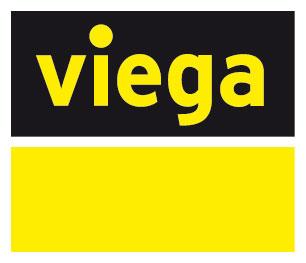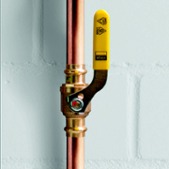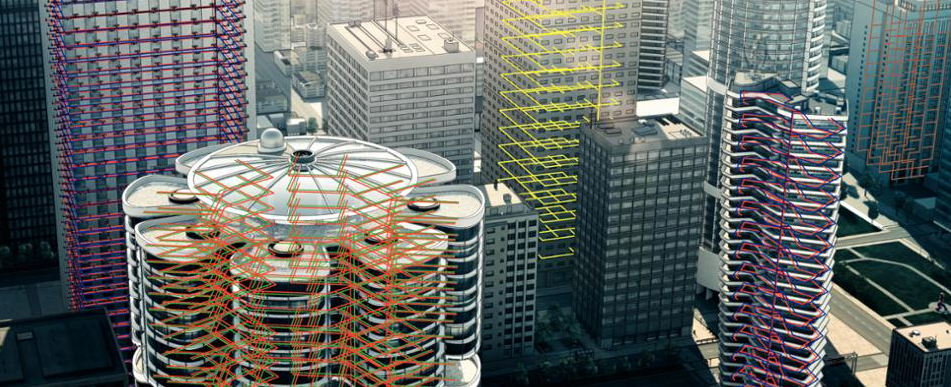Viega’s MegaPress system has revolutionized plumbing and pipefitting.
With its versatility, hundreds of applications and configurations up to 4", MegaPress makes projects safer, faster and more efficient for contractors.
With fittings in carbon steel, multiple stainless steels and marine alloys, MegaPress is approved for more applications than any other pressing system. Because the line is so comprehensive and versatile, a lot of contractors are familiar with only a few aspects of MegaPress and might have questions about other applications or features. To check out all approved applications for MegaPress, view our full applications chart here.
Benefits and applications of MegaPress
MegaPress is faster, safer and more secure than traditional methods of joining pipe. It takes under 10 seconds, on average, per press connection. And because there’s no heat or flame, it’s safer, appropriate for more jobsites and doesn’t require a fire watch.
MegaPress can be installed under almost any conditions and without having to drain the entire system. Its speed and versatility save hours of labor and allow for more accurate estimating.
MegaPress is approved for more than 800 applications, everything from fuel oil and compressed air to water and steam. But just because you don’t see a specific application listed on our spec sheets, doesn’t mean you can’t use MegaPress. If you don’t see the medium or application in which you’re interested, contact Tech Support. Chances are we’ll be able to answer the question right away; if not, we’ll research it and get back to you.
The difference between ProPress and MegaPress fittings. ProPress is for copper and stainless steel. When we talk about ProPress, we are using the Viega trademark name for Copper Tube Size (CTS) press technology. MegaPress is used on Iron Pipe Size (IPS) systems like carbon steel, galvanized, and stainless steel applications. For more details on the difference between these press technologies, watch our TechTalk Live.
Also, there is more than one type of MegaPress. Here’s a breakdown:
MegaPress
- For use with Schedule 5 to Schedule 40 carbon steel pipe
- More than 150 configurations from ½" to 2"
- 3-piece ball valves with stainless ball
MegaPressG
- For use with Schedule 5 to Schedule 40 carbon steel pipe
- HBNR sealing element approved for use in gas and fuel oil applications
- Over 200 configurations from ½" to 4"
- Ball valves up to 2” are available in 4 connection configurations including built-in union
- Approved for underground applications in accordance with code and local AHJ
MegaPress FKM
- For use with Schedule 5 to Schedule 40 carbon steel pipe
- FKM sealing element for installation in higher temperature applications
- More than 200 configurations from ½" to 4"
- 3-piece ball valves with blowout-proof stem and stainless ball
- For use in hydronic heating, compressed air, fire protection, cooling water
MegaPress Stainless
- 304 and 316 IPS stainless steel alloys available
- For use with Schedule 5 to Schedule 40 pipe
- MegaPress Stainless 316 comes with EPDM (NSF certified) or FKM sealing elements
- 3-piece ball valves for both alloys
More on MegaPressG
We get a lot of questions about MegaPressG, the newest addition to the MegaPress systems. Contractors want to know how it can be used and how it’s different from MegaPress.
MegaPressG is specifically engineered for heat, oil and chemical exposure and is the first fitting approved for connecting gas pipe up to 4". It’s a carbon steel alloy with corrosion-resistant zinc nickel coating, an HNBR sealing element and a graphite separator ring engineered to withstand high temperatures. It’s available in sizes and configurations from ½" to 4" and approved for underground use according to local codes. Learn more here.
For more information on MegaPressG and how to alleviate deflection, watch our Tech Talk Live.
MegaPress and steam
MegaPress is rated for low-pressure steam, up to 15 psi with an FKM sealing element and up to 5 psi with an EPDM sealing element.
When using MegaPress for steam, it’s important to use the correct materials for the different parts of the system. Many steam systems use Schedule 40 carbon steel pipe for distribution and thicker Schedule 80 for condensate return to fight corrosion and pinhole leaks (unless stainless steel is used for the return).
MegaPress fittings are designed for Schedule 5 to Schedule 40 pipe. We don’t recommend using MegaPress carbon steel for use with Schedule 80 on steam condensate return. It’s better to use MegaPress stainless to better withstand corrosion.
Steel or copper for steam?
Some contractors insist you should never use copper for steam and steam condensate piping systems. It expands too much, they say since copper expands about 50% more than steel. As steam moves through a system at high speed, coupled with constant temperature fluctuations between cycles, it causes the copper to expand and contract. This torsion on soldered joints can cause them to leak. Stainless steel expands at about the same rate as copper but the connections are typically more stable.
We agree that steel pipe is stronger and the preferred material for steam. However, that doesn’t mean copper can’t work in low-pressure applications.
The key is using ProPress copper fittings rather than soldered copper fittings. ProPress fittings are better able to absorb the torsion caused by expansion and can even act as swing joints in the system.
MegaPress sealing elements
We offer three different MegaPress sealing elements to cover the maximum number of applications. Here’s a breakdown of the three types and their uses:
EPDM:
Ethylene-propylene-diene monomer rubber (EPDM) is a synthetic, cured all-purpose elastomer that offers excellent resistance to chemicals and other harsh environmental conditions. With operating temperatures from 0°F to 250°F, EPDM is suitable for any non-potable water application (hot water included), as well as compressed air, technical gases, non-medical oxygen and ketones. Each EPDM fitting is marked with a green dot. MegaPress EPDM has more than 13 pre-approved applications.
For more information on EPDM watch our Tech Talk Live.
HNBR
Hydrogenated nitrile butadiene rubber (HNBR) is a specialty-purpose elastomer optimized for heat, oil and chemical exposure. These are primarily geared toward gas applications, from natural and propane to mixed and manufactured gases, along with oils and lubricants. Each HBNR fitting is marked with a yellow dot and is approved for temperature ranges from -40-180F.
FKM
Fluoroelastomer (FKM) is a specialty-purpose elastomer with excellent resistance to chemicals. It’s the most versatile of the sealing elements with more than 800 approved applications and is rated for 14°F to 284°F with spikes up to 356°F for 24 hours. These qualities make the FKM sealing element suitable for industrial environments with harsh, corrosive conditions. Each FKM fitting is marked with a white dot.
This overview provides basic information about MegaPress and answers some questions you might have. Viega technical consultants Bo DeAngelo, Troy Locke and Colton Henkowski go into even greater depth in a three-part series on our TechTalk LIVE sessions on Instagram. Check them out below:
For more information on FKM watch our Tech Talk Live.
3 Part Series:
Here is a resource for MegaPress brochures, sell sheets and more. For questions about MegaPress, call Technical Support at (800) 976-9819 or message us at techsupport@viega.us















